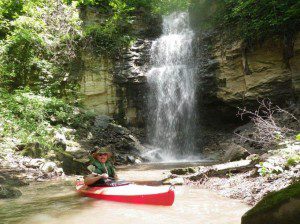In
the field forecasting is an important skill for the backcountry hiker. Learning the basics is an important first
step.
Let me begin by stating that forecasting begins at
home. Monitor the local news and the cable
weather channels to get a broad, general idea of the weather conditions before hitting
the trail.
Further refine that information by checking internet sources such as www.wunderground.com and the National Weather Service’s site www.noaa.gov.
Further refine that information by checking internet sources such as www.wunderground.com and the National Weather Service’s site www.noaa.gov.
 My
“go to” reference is Northwest Mountain
Weather by Jeff Renner (published by the Mountaineers.) Renner is a professional meteorologist and
broadcaster, an outdoorsman and flight instructor. Northwest
Mountain Weather provides a superb overview on how “the weather works” in
the Pacific Northwest. Uniquely focused
to this region, this book provides an overview on climate and weather, local
weather patterns, snow and avalanche conditions, and provides many charts and
data sources. My favorite part of the book
is Chapter Seven’s “Field Forecasting Guidelines.” This chapter identifies what
to watch for and monitor while in the backcountry.
My
“go to” reference is Northwest Mountain
Weather by Jeff Renner (published by the Mountaineers.) Renner is a professional meteorologist and
broadcaster, an outdoorsman and flight instructor. Northwest
Mountain Weather provides a superb overview on how “the weather works” in
the Pacific Northwest. Uniquely focused
to this region, this book provides an overview on climate and weather, local
weather patterns, snow and avalanche conditions, and provides many charts and
data sources. My favorite part of the book
is Chapter Seven’s “Field Forecasting Guidelines.” This chapter identifies what
to watch for and monitor while in the backcountry.
The balance of this post will focus on what to consider
about hiking during periods of thunderstorm activity.
The dark clouds of a
thunderstorm provide a strong sense of mass and energy. They can be seen a long way off. Avoid them when possible. As a storm develops you will notice that the
 clouds may
change shape, grow taller and darker.
clouds may
change shape, grow taller and darker.
 clouds may
change shape, grow taller and darker.
clouds may
change shape, grow taller and darker.
In many cases an anvil
shaped cloud growing tall and developing a distinct leading edge maybe
observed. This is a sign that a storm is
on the way.
Lightning is the predominant killer associated with a thunderstorm. Roughly 40 people are killed each year and approximately 240 are injured. Visit the National Weather Service’s site for more information about lightning safety; http://www.lightningsafety.noaa.gov/medical.htm
Lightning is the predominant killer associated with a thunderstorm. Roughly 40 people are killed each year and approximately 240 are injured. Visit the National Weather Service’s site for more information about lightning safety; http://www.lightningsafety.noaa.gov/medical.htm
The ideal action to avoid the danger of a significant
storm is to get out of the weather.
Leave the field for the safety of a building or a car. Caves can provide shelter but must be deep
and dry. A shallow cave offers almost no
protection.
Renner’s guide lines and actions include:
“Do
watch for cumulus showing strong upward development.
Do choose a campsite uphill from valley floor.
Do get away from exposed areas, pinnacles, peaks.
Do get
away from water.
Do seek
low ground in open valleys and meadows.
Do move
at once if hair or scalp feels tingly.
Wilderness Survival trainer Peter Kummerfeldt amplifies
Renner’s comment by adding the following:
“Be
proactive – don’t wait until you are getting wet to suspend outdoor activities.
Don’t be connected to the
tallest object in the area.
If caught outside, move into low trees of even height and stand away from tree trunks. Stay away from isolated trees.
If caught outside, move into low trees of even height and stand away from tree trunks. Stay away from isolated trees.
Water is a great conductor
of electricity – get out of the water at the first sign of a storm developing.”[2] (For more information visit Kummerfeldt’s web
site, www.outdoorsafe.com.)
Thunderstorms have the potential to deliver large
quantities of water. Look for higher ground and stay out of stream beds that may flood significantly
and without warning.
I monitor my GPS receiver’s barometer. I change my elevation plot to a pressure plot and leave the receiver on. Even though a GPS receiver may not be the most accurate it is the plot’s trend over time that I am concerned about. Should I see the pressure drop noticeably I’ll take shelter or return to my vehicle.
The key is to stay alert and make a plan of action when a storm approaches.
I previously posted a short article about using your GPS
to monitor barometric pressure while in the backcountry; go here
to read the post.









